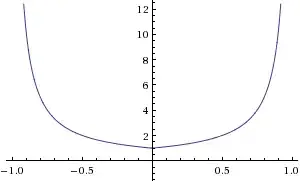Let $\phi \colon [0,1) \to [0, \infty)$ a diffeomorphism with inverse $\psi$. Some possible choices: $t \mapsto \frac{t}{1-t}$, $t \mapsto \tan (\frac{\pi}{2}\cdot t)$.
The map
$$x \mapsto \phi(||x||) \cdot \frac{x}{||x||}$$
is a diffeomorphism from $B^n$ to $ \mathbb{R}^n$ with inverse
$$y \mapsto \psi(||y||) \cdot \frac{y}{||y||}$$
$\bf{Added:}$ It turns out that the choice of the diffeomorphism from $[0,1)$ to $[0,\infty)$ matters a lot, since $x \mapsto ||x||$ is not smooth at $0$. This was brought to my attention by @Freeze_S and I thank him a lot! One can check that the map obtained for $\phi(t) = \frac{t}{1-t}$ is only $C^1$ at $0$... However, we can use the map so kindly suggested by @Jesus RS: ( big thanks! ) $\phi(t) = \frac{t}{\sqrt{1-t^2}}$ with inverse
$\psi(s) = \frac{s}{\sqrt{1+s^2}}$ and it will work just fine. The diffeomorphisms are, as written by @Jesus RS:
$$x \mapsto \frac{x}{\sqrt{1-||x||^2}} \\
y \mapsto \frac{y}{\sqrt{1+||y||^2}}$$
In fact, as long as $\phi(t)$ is an odd function of $t$ things will work OK. So, another example is
$$x \mapsto \frac{\tan (\frac{\pi}{2} \cdot ||x|| )}{||x||} \cdot x $$
